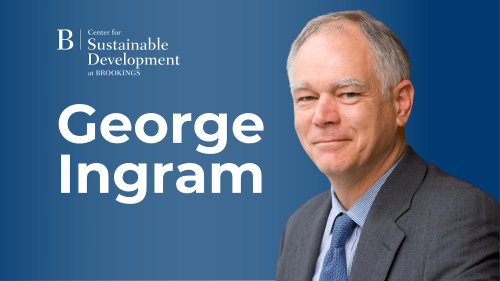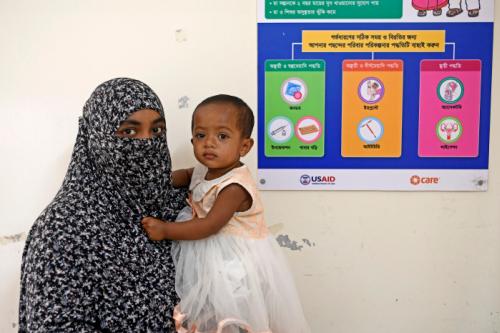As a senator and now as president, Barack Obama has set the pace on open government. The commitments have been impressive. However—and sometimes understandably—implementation has lagged. But unless there are unknown steps afoot, the administration risks losing the momentum at the Open Government Partnership summit in London at the end of this month.
Open Government
One of President Obama’s first pronouncements (January 21, 2009) “…committed to creating an unprecedented level of openness in government. We will work together to ensure the public trust and establish a system of transparency, public participation, and collaboration.” President Obama followed up on this commitment by organizing and hosting the first meeting of the global Open Government Partnership (OGP) in September 2011, where he presented the first U.S. OGP National Action Plan (NAP). Importantly, for those of us focused on effective foreign assistance, the NAP put forth a new commitment to “release and implement government wide reporting requirements for foreign aid.”
The global movement on transparent and accountable government received a further boost at the 2013 G-8 Lough Erne Summit, with explicit commitments on data, trade, taxation and natural resource extraction.
Open Data
In September 2010, the Department of State and USAID launched the U.S. government into the aid transparency era with the creation of the Foreign Assistance Dashboard, intended to make public the data of all U.S. agencies involved in assistance activities and serve as a one-stop shop for all foreign assistance information—a needed step given the 25-plus federal agencies involved in providing such assistance.
In November 2011, at the Fourth High Level Forum on Aid Effectiveness at Busan, Korea, Secretary Clinton significantly advanced the U.S. commitment to aid data transparency by announcing that the United States would join the International Aid Transparency Initiative (IATI).
A year later, OMB issued Bulletin 12-01, which directed how and when federal agencies were to report their foreign assistance information. This helpful guidance was another positive step forward. In May 2013, open data received a further shot of adrenalin when OMB and OSTP issued a White House executive order on Making Open and Machine Readable the New Default for Government Information. The title gives away the story line, and its significance for foreign assistance data was in giving a boost to reporting data in IATI-compliant format.
Finally, for a truly entrepreneurial approach that broke the model for government action, in 2012 the AID office responsible for the Development Credit Authority (DCA) decided that its considerable stash of data could be put to use if made publicly available and, after considerable deliberation and investigation, used crowdsourcing to scrub the data before making it available on the web.
Open Policy
While transparent policymaking—real consultations with interested and expert stakeholder communities in the policy formulation process—has not received the same formal attention and commitment, there have been pockets of good practice and progress.
MCC was created with transparency in its DNA and has engaged in serious consultations in formulating some of its policies. The White House-led Presidential Policy Directive on Development was developed through a process that included some consultations with outside communities. The State Department-led Quadrennial Diplomacy and Development Review also had elements of consultation. Under the Obama administration, USAID has a mixed but improving record in consultative policy making, engaging in consultations with some of its initiatives but famously failing to do so in developing its reform agenda, USAID Forward. AID failed to engage in consultations in crafting several of its early sector policies, but then created a commendable model for open and participatory policymaking with the Urban Sector Services Policy and followed that model with several subsequent consultative policy formulations. The trend is positive.
2013 OGP Summit
Countries that are members of the OGP are expected to submit a revised National Action Plan (NAP) at the London Summit that will stretch their commitment to open government. A group of individuals and organizations have submitted three modest recommendations on foreign assistance for the U.S. NAP: publish a full range of timely and comparable foreign assistance information for all U.S. agencies administering foreign assistance, in the IATI standard; adopt mechanisms for open, consultative policymaking; and create incentives for organizations implementing foreign assistance to publish their aid data.
The London OGP Summit is now four weeks away. To date, there have been a few meetings but no serious consultation around these or other recommendations the U.S. government may be considering. Various reports suggest there will be no commitment on assistance, or that the U.S. plan will simply repeat existing commitments.
In any case, an open government commitment should beget open government—the give and take of real consultations, an exchange of views and positions and the opportunity to comment on proposed positions. Civilian stakeholders have provided their input: Where is the open government and where is the U.S. OGP plan?
The Brookings Institution is committed to quality, independence, and impact.
We are supported by a diverse array of funders. In line with our values and policies, each Brookings publication represents the sole views of its author(s).



Commentary
Open Government Requires Aid Transparency
October 1, 2013